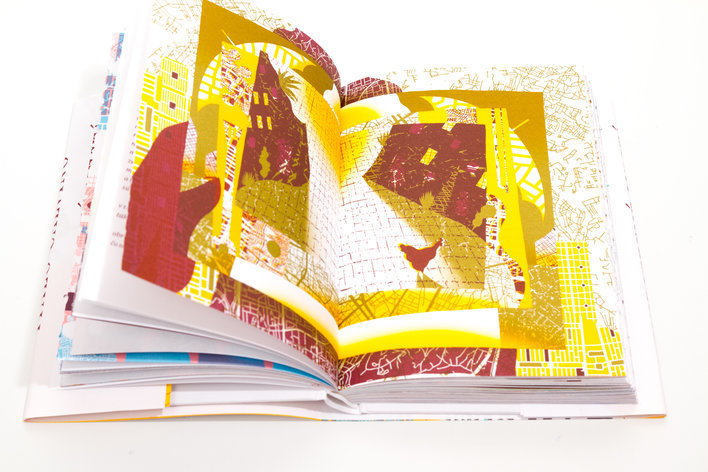The visible and the invisible
The Invisible Cities by Italo Calvino in the new edition by Slovak publisher Artforum is a book with a lot of stories. The whole design plays with what is visible and what is invisible and leaves a lot of freedom and responsibility to the readers themselves. The novel itself is covered in a lot of mysteries and Artforum added some more to discover.
The book explores imagination and the imaginable through the descriptions of 55 cities by an explorer, Marco Polo. It is framed as a conversation between the emperor Kublai Khan, who constantly has merchants coming to describe the state of his expanding and vast empire, and Polo. But are those really cities that Marco Polo talks about to Kublai Khan? Some say all those cities are actually only different descriptions of one single city: Venice, the city of cities, hometown of the traveler Polo. Others say all the cities bearing women´s names are actually different ladies this traveler is depicting to the emperor. Both of these interpretations were confronted by the illustrator Daniela Olejníková and graphic designer Palo Bálik in the new Slovak edition of this classical novel.
The reader gets a snow-white book with a typographical cover full of women’s names. Even though it is an illustrated book, you can at first only see pages covered in text with slight anticipation of illustrations showing through the very white paper. Every reader, according to their taste, courage and consideration, needs to cut the perforated pages to see the hidden, invisible, full two-pages illustrations. They offer a lot of new insights on the short prose poems in which Marco Polo describes the fictitious cities and leave a lot of space for the imagination of the viewer.
The book is made in a special binding, the French fold, allowing the illustrated pages to be only perforated on the edge, so the illustrations remain invisible until the readers makes them visible. They can do so using a specifically designed tool attached to the rear of the jacket. This has the shape of an ancient Mongol plaque (Paiza), which in the times of Marco polo and Kublai Khan had the function of safe conduct pass, today´s passport allowing its holder to travel around the emperor´s vast empire.
Some readers make the illustrations visible straight away, others prefer to first read a story and then look at the picture and there are some that first read the entire book and only then cut the perforated pages. Readers who prefer only text can of course leave the illustrations hidden and invisible.
The illustrations were made digitally and are printed using three Pantone spot colors each. The colors change according to the sections of the book as originally designated by Calvino in a specific manner which is graphically depicted on the endpapers.
For the title of the work, the graphic designer used a typeface similar to the one found at the streets of Venice. Other headings in the book are written using different typefaces, that represent the diversity of typographic language used in nowadays cities in the world. They are repeated on the book´sjacket emphasizing the name of each city described in the book. The typefaces are repeated to again for Calvino´s categories which are systematically designated by the colors of the illustrations. Changing colors are the means of designating the sections in the illustrations and typeface in the headings. In typography, information differs not by color, but by the shape of letters. It is a technological need as they are usually printed in one color only.
The book´s jacket can fold out into a poster (hidden again on the rear side of the paper) in which attentive viewer can identify the city plan of Venice.
The book is printed completely on Munken Kristall high quality paper. The book itself on Munken Kristall Rough100g/m2,the cover on Munken Kristall Rough100g/m2, the endpapers on Munken Kristall 120g/m2 and the jacket on Munken Kristall100g/m2 The tool for cutting the perforated sheets is made from Munken Kristall400g/m2.
We invite you to take an adventurous journey to the cities depicted in words and images with this new and unique edition of Italo Calvino´s Invisible Cities.!
You can watch a short video about the book here.
